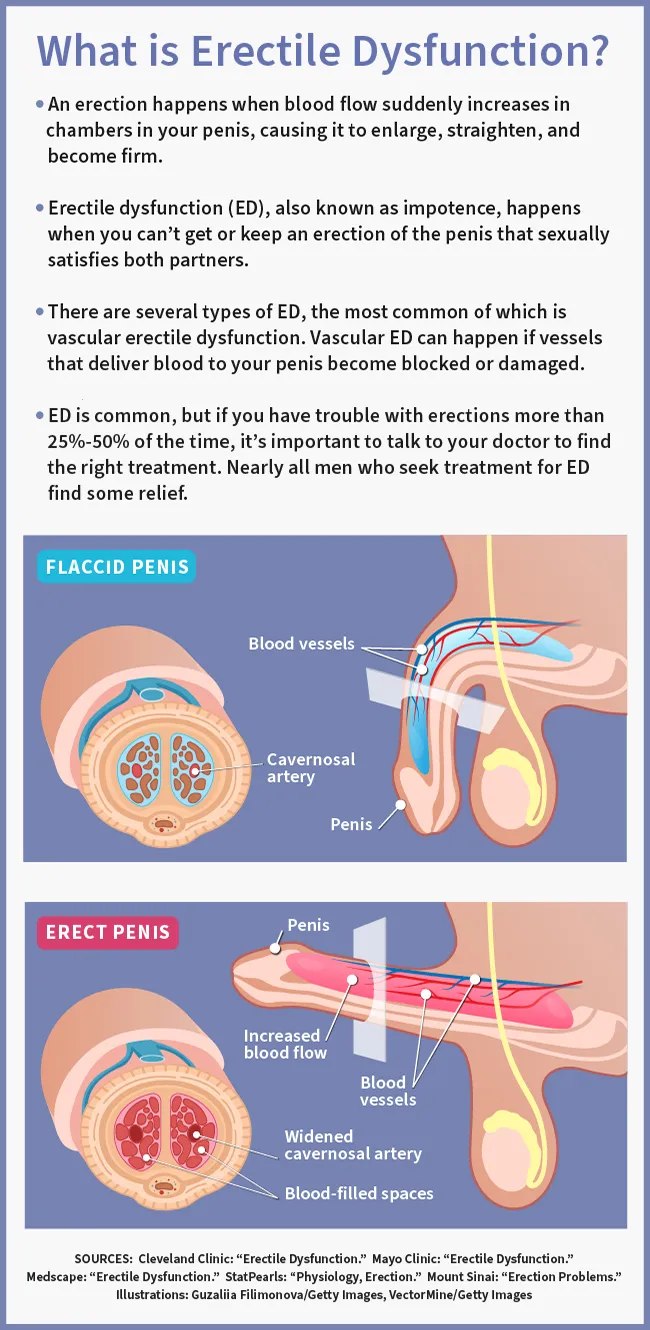
bennettfoveaux
About bennettfoveaux
Effective Treatment Methods For Erectile Dysfunction: A Complete Case Research
Erectile dysfunction (ED) is a common condition that affects hundreds of thousands of men worldwide, impacting their quality of life and relationships. This case research explores effective treatment methods for ED, highlighting a patient’s journey, treatment options, and outcomes.

Affected person Background
John, a 52-12 months-old male, offered to his main care physician with complaints of problem attaining and sustaining an erection over the previous yr. He reported that the situation had caused vital distress in his marriage and affected his shallowness. John had a medical historical past of hypertension and was a former smoker, but he had maintained a wholesome weight and was bodily active.
Preliminary Evaluation
Throughout the initial session, the physician conducted a complete assessment, which included:
- Medical History Overview: The physician reviewed John’s medical historical past, including his hypertension administration and any medications he was taking. It was noted that John was on a beta-blocker, which could contribute to erectile dysfunction.
- Psychosocial Analysis: John was requested about his relationship dynamics, stress ranges, and any psychological factors that is perhaps contributing to his ED. He reported increased stress at work and some anxiety concerning his efficiency.
- Physical Examination: A physical examination was carried out to rule out any underlying medical circumstances. The examination revealed no abnormalities in genitalia and regular blood flow.
- Laboratory Tests: Blood checks have been ordered to verify for hormonal imbalances, cholesterol ranges, and blood glucose levels, as diabetes and cardiovascular issues could be linked to ED.
Diagnosis
Based on the assessments, John was diagnosed with erectile dysfunction probably related to a mix of psychological elements and the negative effects of his medication. The physician explained the condition to John, emphasizing that it’s a common subject and can typically be handled effectively.
Treatment Options
The physician discussed several treatment options with John, together with:
- Lifestyle Modifications: The first advice was to implement lifestyle changes. This included adopting a coronary heart-wholesome food regimen, engaging in regular bodily activity, and quitting smoking. John was provided with assets and assist to help him make these adjustments.
- Medication Adjustment: On condition that John’s beta-blocker might be contributing to his ED, the physician discussed the opportunity of switching to another antihypertensive medication with a lower threat of sexual negative effects. After consulting with a cardiologist, John’s medication was adjusted.
- Oral Phosphodiesterase Kind 5 Inhibitors (PDE5i): The physician prescribed a PDE5 inhibitor, comparable to sildenafil (Viagra), to assist John achieve erections. He was educated on how to make use of the treatment and the significance of taking it as directed.
- Counseling and Therapy: Since psychological components were identified, the physician recommended counseling to handle anxiety and relationship issues. John was referred to a licensed therapist specializing in sexual well being.
- Vacuum Erection Gadgets (VED): As a non-invasive choice, John was also launched to vacuum erection gadgets. If you cherished this article and you would like to acquire more info regarding over the counter ed medicine nicely visit the web-page. These gadgets create a vacuum that attracts blood into the penis, serving to to realize an erection.
- Penile Injections: If oral medications were ineffective, the physician discussed the choice of penile injections, which involve injecting medicine immediately into the penis to facilitate an erection.
Implementation of Treatment
John started with lifestyle modifications, incorporating common train and a healthier diet into his routine. He additionally stopped smoking, which he found challenging but manageable with help from his family and mates.
After a couple of weeks, John transitioned to the prescribed PDE5 inhibitor. He was initially hesitant but reported that the remedy considerably improved his potential to realize and maintain an erection. He experienced some mild negative effects, reminiscent of headaches, however discovered them manageable.
John also attended counseling sessions, where he worked on communication expertise together with his partner and addressed his anxiety related to sexual efficiency. The therapist helped him develop coping strategies to handle stress.
Observe-Up and Outcomes
At a observe-up appointment three months later, John reported substantial enchancment in his sexual function and general high quality of life. He expressed gratitude for the comprehensive approach to his treatment, which addressed each the physical and psychological aspects of his situation.
- Erectile Operate: John reported that he was in a position to attain erections consistently and felt extra confident in his sexual efficiency.
- Relationship Satisfaction: His relationship together with his companion improved as they communicated extra openly about their wants and emotions.
- Psychological Effectively-Being: John felt less anxious and more in control of his sexual health. The counseling periods provided him with invaluable instruments to manage stress.
- Treatment Tolerance: John tolerated the new antihypertensive remedy well, and his blood stress remained well-controlled with out significant side effects.
Conclusion
This case study illustrates the importance of a multifaceted strategy to treating erectile dysfunction. By addressing lifestyle elements, treatment administration, psychological help, and patient schooling, John was in a position to beat his challenges and enhance his sexual well being. It is crucial for healthcare providers to contemplate each physical and psychological parts when treating ED, as a holistic approach leads to raised outcomes and enhances patients’ general quality of life.
As ED remains a prevalent subject amongst males, continued consciousness and training about treatment options are important in helping patients navigate this sensitive situation successfully.

No listing found.